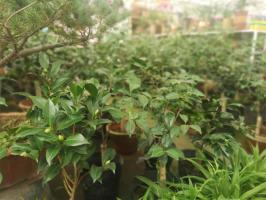Introduction
Container planting is an excellent way of growing tomatoes, especially for those with limited garden space. However, choosing the right container for planting tomatoes can be challenging, given the many options available in the market. This article explores the best containers for container planting tomatoes, with a focus on their benefits and drawbacks.
Plastic Containers
Plastic containers are one of the most popular options for container planting tomatoes. They are lightweight, inexpensive and readily available in different sizes and colors. Their lightweight nature makes them ideal for balcony gardens, and they come in various shapes and sizes, making them flexible for different tomato varieties. However, plastic containers are prone to cracking or fading over time, and they may not be as durable as other materials.
Terra Cotta Pots
Terra Cotta pots are another popular option for container planting tomatoes, thanks to their aesthetic appeal. They come in various colors and shapes, and their porous nature allows good air circulation in the soil. This feature prevents the soil from becoming waterlogged, which could damage the roots of the tomato plant. However, terra cotta pots are heavy and fragile, and they can easily shatter if dropped or knocked over.
Fabric Containers
Fabric containers are becoming increasingly popular for container planting tomatoes. They are lightweight and easy to move around, making them ideal for small gardens or balcony spaces. Additionally, they are durable and designed to last for a long time. The fabric material allows good air circulation to the roots, ensuring a healthy and strong plant growth. However, the fabric material may wear out over time, especially with exposure to harsh weather conditions.
Self-Watering Containers
Self-watering containers are designed to maintain consistent moisture levels in the soil through a reservoir system. They are ideal for busy gardeners who do not have the time to water their plants regularly. Additionally, they come in various sizes and shapes, making them suitable for different tomato varieties. However, self-watering containers can be expensive, and they may not be easy to move around once filled with soil and water.
Conclusion
Choosing the right container for container planting tomatoes is a critical step towards growing healthy and robust plants. Plastic containers are cheap and flexible, while terra cotta pots are aesthetically appealing but fragile. Fabric containers are durable and lightweight, while self-watering containers are ideal for busy gardeners. Ultimately, the type of container chosen depends on individual preferences, space availability, and tomato variety.

 how many times do yo...
how many times do yo... how many planted tre...
how many planted tre... how many pine trees ...
how many pine trees ... how many pecan trees...
how many pecan trees... how many plants comp...
how many plants comp... how many plants can ...
how many plants can ... how many plants and ...
how many plants and ... how many pepper plan...
how many pepper plan...




























